Rabbit Air MinusA2 Review
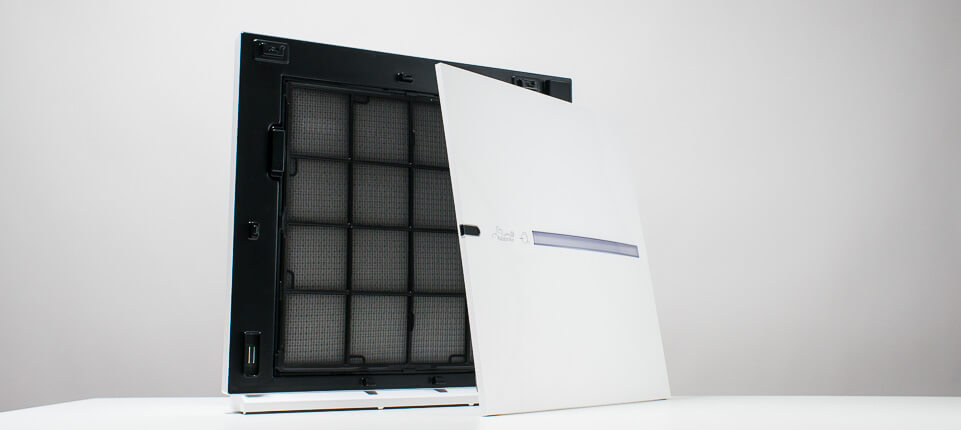
Feature Scores
Pros
- More filters than most other air purifiers capture more particles/gases on first pass through
- Good performance in energy efficiency and noise output tests
- Smart functionality (SPA-780N) allows unit to be controlled wirelessly via an app
- All control panel lights can be turned off
- Very well made, employing certain design choices that increase the unit’s longevity – e.g. fan speed changes over several seconds unlike other units where it’s instantaneous. This no doubt adds to the longevity of the fan motor. Not to mention the fact that this it uses a brushless motor – something that other cheaper units simply don’t have.
- 5 year warranty – longer than most other air purifier warranties
Cons
- Its price – lower CFM than top rated units but still retails for more than 4x the price
- All those filters need to be replaced – adds to long term cost of ownership
Editor's Score
Quick Facts
| Particle filter type | HEPA |
|---|---|
| Gas filter type | Carbon |
| Pre-Filter | Separate mesh pre-filter |
| Output | Approx. 210 CFM |
| Air Movement | Mesh pre-filter > medium filter > HEPA filter > customizable filter > carbon filter |
| Number of fan speeds | 5 |
| Size | 21.5 in. tall x 20.5 in. wide x 8 in. deep |
| Weight | Approx. 19 lb. |
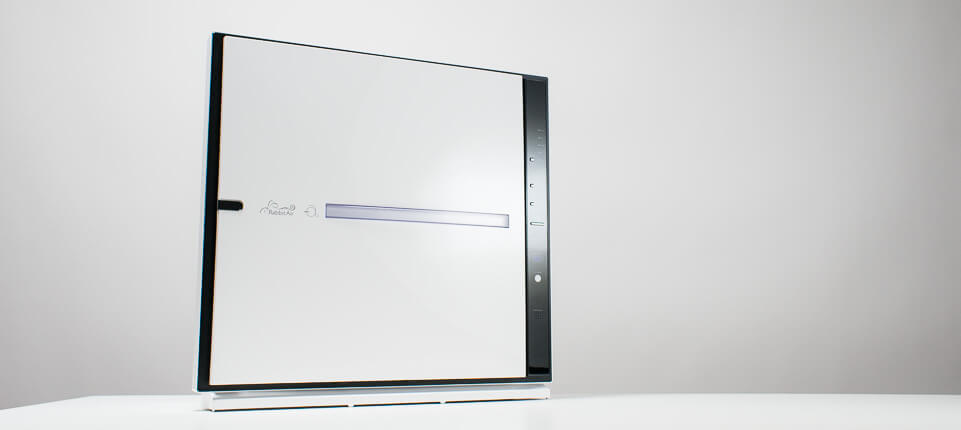






Analysis
A step by step breakdown of the MinusA2's performance.
Air Processing Performance
Test Results
In a 150 sq. ft. test environment the MinusA2 took 13 minutes to lower room particle concentration from 10,000 particles per cubic ft. (relatively dirty air) down to 1,000 particles per cubic ft. (very clean air).
This was both an expected and unexpected result. It was expected considering the unit’s output of approx. 210 CFM and the fact that it’s equipped with a HEPA filter. Units with greater output and the same type of primary particle filter (HEPA) were slightly faster. For example, the Winix 5500-2 with 250 CFM of output took only 9 minutes. The Coway Mighty, also with 250 CFM of output took 10 minutes.
Units with less output and the same type of primary particle filter (HEPA) took slightly longer. For example, the Rabbit Air BioGS 2.0 with approx. 190 CFM of output took 15 minutes. A much lower output unit, the GermGuardian AC4825 (approx. 140 CFM) took 23 minutes.
Thus, the MinusA2’s time of 15 minutes fell right where you would expect it to fall compared to units with less output (20 to 30 minute range) and units with more output (sub 10 minute range) with the same type of primary particle filter – that is to say, it’s time fell right in the middle of the times for each of those groups of air purifiers.
This result is somewhat unexpected considering the MinusA2’s additional filter(s). It boasts an additional medium filter sandwiched between its pre-filter and HEPA filter and a customizable filter between its HEPA filter and carbon filter. The latter filter – the customizable filter – does not affect particle filtration. It only affects gas filtration and therefore had no impact on this particle test. However, the former filter – the medium filter – should, at least theoretically, have had some type of impact on this test. Rabbit Air claims that it removes particles greater than 1 micron in size. And our particle test certainly included particles of this size. However, in practice it didn’t appear to do much to improve filtration speed, at least not according to our testing.
The second part of our particle test involved allowing the air purifier to continue to run for as long as it took for it to achieve as low of a room particle concentration as it was able to achieve. For most units we tested, including this Rabbit Air, that was an ultra low concentration of only 100 particles per cubic ft. (a concentration as close to 0 as was possible with our testing equipment and technique). The MinusA2 took an additional 38 minutes on top of the initial 15 minutes to reach this concentration. Recall room concentration started at 10,000 particles per cubic ft. so it took 15 minutes to get to 1,000 and an additional 38 minutes to get to 100 particles per cubic ft.
The aforementioned 250 CFM Winix 5500-2 and Coway Mighty were quicker, as expected (because of their greater output). The Winix took only an additional 6 minutes and the Coway an additional 13 minutes to get from 1,000 down to 100 particles per cubic ft.
Filter Analysis
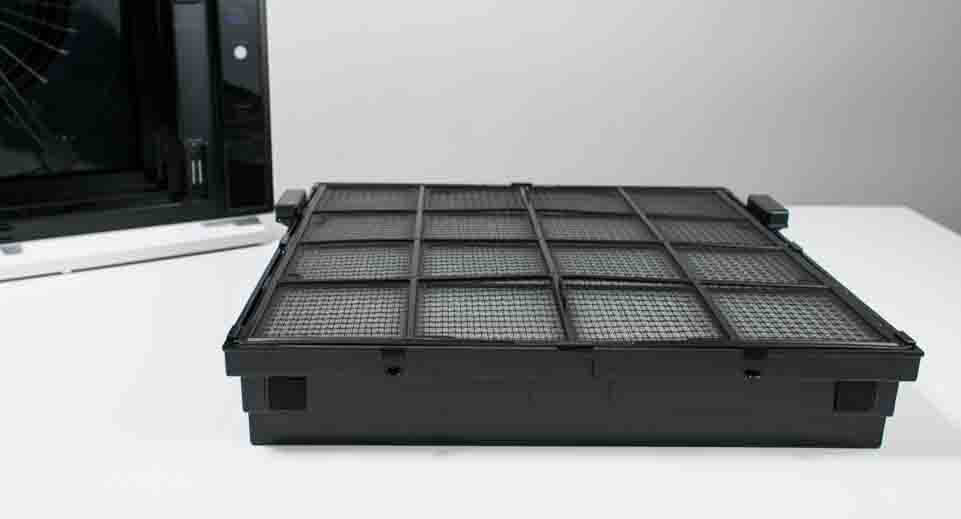
Particle Filter
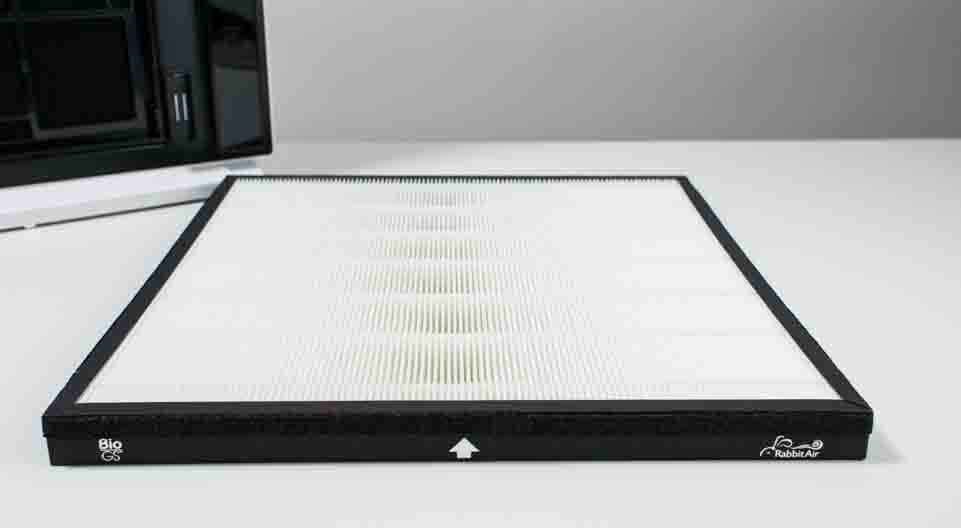
The MinusA2 is equipped with a true HEPA filter to capture and remove particles (mold, allergens, dust) from the air it processes.
This is the exact same type of particle filter you find on much less expensive air purifiers. For example, the approx. $150 Winix 5500-2 has the exact same type of particle filter (HEPA). The approx. $200 Coway Mighty has the exact same type of particle filter (HEPA). Even the budget priced approx. $80 GermGuardian AC4825 has the exact same type of particle filter (HEPA).
Why does the MinusA2 use the exact same type of filter as air purifiers a fraction of its price? Because it works and it works really well.
HEPA denotes a filter efficiency rating of 99.97%. That is to say, a HEPA filter captures up to 99.97% of particles that travel through it. This is a very high efficiency rating. For comparison, the air filter in your home’s HVAC system is likely only efficient up to 90%.
Now, many budget air purifiers do not come equipped with a HEPA filter. The GermGuardian is more of an exception to the rule but the point is that there are units in its same price range that come equipped with a HEPA filter. Past $100 most air purifiers come equipped with a HEPA filter. It doesn’t matter if it’s a $100 air purifier or a $1000 air purifier, most units come equipped with a HEPA filter. Even the approx. $900 IQAir HealthPro Plus comes equipped with a HEPA filter. And the reason all of these units use a HEPA filter for particle filtration is that it works really well.
So, why would you ever pay approx. $600 for the MinusA2 if it uses the exact same type of particle filter and therefore the exact same quality of particle filtration as much cheaper options? We’ll get to answering that question as we continue through this review.
Gas Filter
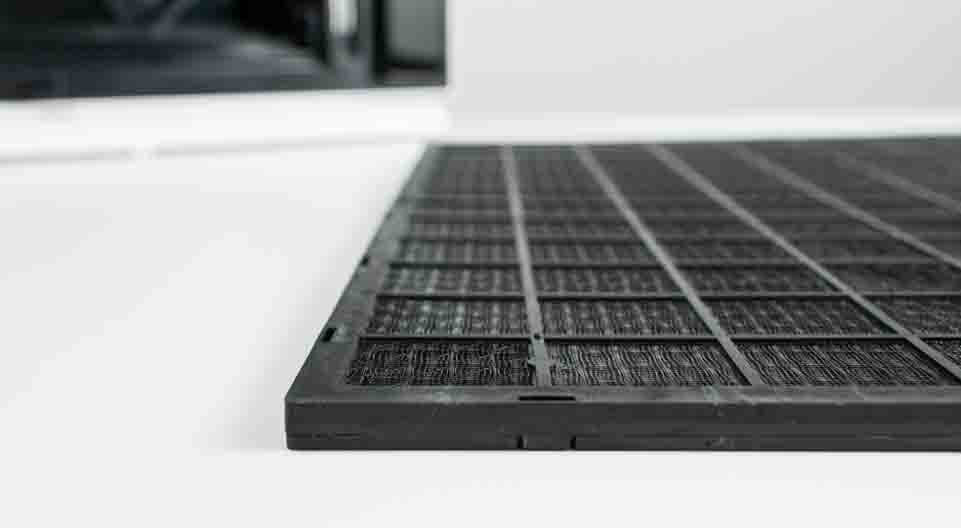
The MinusA2 is equipped with an activated carbon filter for the purpose of filtering out unwanted gases like VOCs and odors. Specifically, it’s equipped with a pellet based carbon filter.
Carbon filters come in two varieties
- a fibrous material coated with carbon
- a plastic honeycomb frame containing carbon pellets
The latter variety describes the MinusA2’s carbon filter. This type of filter is more effective than the fibrous type for filtering out gases as it provides greater surface area for gas adsorption.
When you buy the MinusA2 you have to choose between four different customizable filters:
- Germ defense
- Pet allergy
- Toxin absorber
- Odor remover
When purchasing our test unit we selected the odor remover. This filter ended up being nothing more than an additional carbon filter. However, instead of being the pellet based type it was the fibrous type.
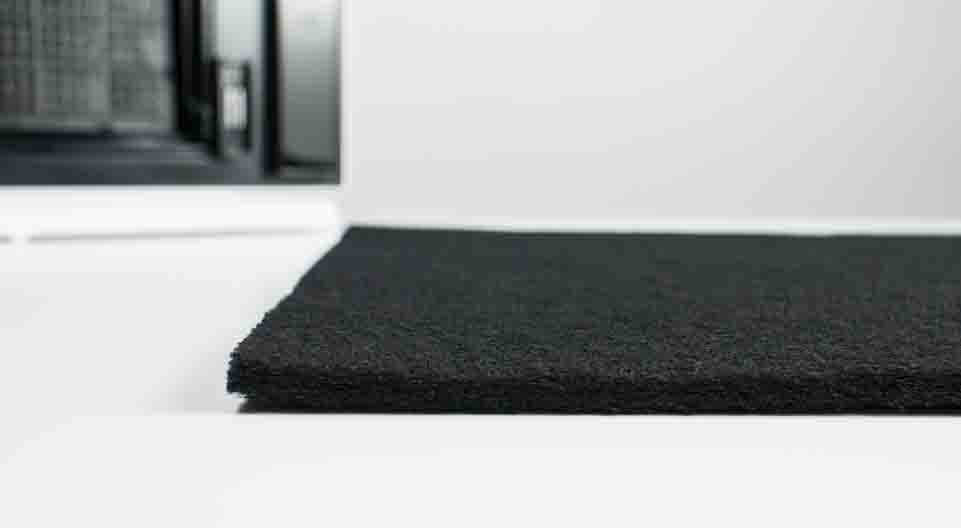
Most budget air purifiers come equipped with the fibrous type of carbon filter. The GermGuardian AC4825 is a good example of such an air purifier. Stepping up to units in the $100 to $200 range you still mostly see the fibrous type. The Winix 5500-2 is the exception to the rule here. It does come with a pellet based carbon filter. The Coway Mighty, on the other hand, comes equipped with the same type of fibrous carbon filter as the GermGuardian. This is the same type of filter as the odor remover customizable filter on the MinusA2.
Once you move up to the $300 and especially $400 range you mostly see pellet based carbon filters. The Rabbit Air BioGS 2.0 has this type of carbon filter. So does the Coway AirMega air purifiers. Even the approx. $900 IQAir HealthPro Plus has this same type of carbon filter. The only difference between them is the amount of carbon in their filters. The BioGS 2.0 has about the same amount as the MinusA2. The AirMega units have about double (because they have two filters). The IQAir has about five times the amount of carbon. All of these air purifiers filter gases better than units equipped with fibrous carbon coated gas filters.
Thus, if gas filtration is a priority to for you, the MinusA2 will serve that purpose very well. It comes equipped with a pellet based carbon filter. If you select the odor remover as your customizable filter it will also remove gases although it won’t do it as well as the primary gas filter – the pellet based carbon filter.
Do both of these gas filters working in tandem in the MinusA2 filter gases better than something like the IQAir or even the Coway AirMega? No. Gas filtration is all about the quality of the carbon (pellet vs coated fiber) but also the quantity of the carbon. The IQAir and Coway have the same quality of carbon filters with greater quantity. Thus, they are the better options for gas filtration. However, that is not to say that the MinusA2 won’t filter gases well. It certainly will do a sufficient job for most applications.
Pre-filter
The MinusA2 is equipped with a mesh pre-filter to filter out larger particles. The purpose of the pre-filter is to extend the life of replaceable filters. For the MinusA2 this includes two different filters – the medium and HEPA filters.
Large particles clog up the pre-filter instead of these two filters. This allows you to clean the pre-filter free of charge instead of having to replace the filters more often at cost.
The MinusA2’s pre-filter is no different than the mesh pre-filter on cheaper units like the BioGS 2.0, Coway Mighty, or even Winix 5500-2. It’s a mesh design and it’s washable.
Most budget units do not have a separate washable filter. An air purifier like the GermGuardian AC4825 uses the fibrous carbon filter like a pre-filter. The fibers of the carbon filter, in addition to capturing gases (via the carbon coating), also catch large particles. On these units the carbon filter has to be replaced at cost when it saturates with large particles.
Air Movement
The MinusA2 outputs at approx. 210 CFM (the manufacturer specification is 218 CFM). This amount of air processed at this rate (210 cubic feet of air per minute) through the unit’s five filters gives it an area of coverage in the 250 to 300 sq. ft. range.
Note that it has to be set to maximum fan speed to get all the way up to 250 to 300 sq. ft. of coverage and even then, 300 sq. ft. is really pushing the limits of what it can do.
Top rated options like the Winix 5500-2 and Coway Mighty have greater output – approx. 250 CFM. Such units have a similar area of coverage although they could theoretically be used in slightly larger spaces because of their slightly greater output.
Earlier we talked about how the MinusA2 has essentially the same particle filtration quality as both the Winix and Coway. Here we see that the Winix and Coway actually have greater output. Again, the theme here is that higher cost (and by that we mean the MinusA2’s much higher price tag compared to these other units) does not translate to greater performance in all aspects. The MinusA2 certainly outperforms the Winix and Coway in some aspects. However, filtration quality and output are not any one of those aspects.
Energy Efficiency
The MinusA2 is one of the more energy efficient air purifiers we tested. On maximum fan speed at approx. 210 CFM it draws only 56.7 watts of power for a CFM/watt ratio of 3.58. For comparison, most budget air purifiers have a CFM/watt ratio in the 2 to 3 range on their highest fan speed. The higher the ratio, the more energy efficient the air purifier, so the 3.58 ratio of the MinusA2 is definitely better than the 2 to 3 ratio of most budget air purifiers on the market.
In terms of model specific comparisons, the Winix 5500-2 and Coway Mighty have a 4.55 and 3.43 ratio, respectively. The draw slightly more power than the MinusA2 (in the 60 to 70 watt range) but they also have a greater output which is the reason for the slightly better ratio of the Winix and the very similar ratio of the Coway despite their higher raw power draw.
On lower fan speeds energy efficiency increases dramatically for the Winix, Coway, and Rabbit Air. The Winix has a ratio close to 12, the Coway a ratio close to 20, and the MinusA2 has a ratio close to 8. The ratios improve because the power draw drops significantly while these units still maintain quite a bit of output.
The MinusA2 draws only 6.1 watts of power on its lowest fan speed. The Winix and Coway both draw well under 10 watts as well. All three units still output in the 40 to 60 CFM range on this setting.
Is this enough of a CFM to lower room particle concentration in even a small 100 to 150 sq. ft. room? No. But it can definitely get close to maintaining low room particle concentration (after you’ve run it on a high speed to get the concentration low) in smaller rooms. And doing so will allow these units to run at peak energy efficiency.
Noise Output
The MinusA2 also performed quite well in our noise output testing. On its highest fan speed it was measured at 67.1 dB. For comparison, the Winix 5500-2 was measured at 67.5 dB and the Coway Mighty was measured at 66.1 dB. Of course, those two units do have a slightly higher output so they do give you slightly more (greater area of coverage) for the noise that they produce.
On their lowest fan speeds all three units were measured right around 40 dB. This is a very low noise output for any appliance. 40 dB is essentially whisper quiet. Even if you’re highly sensitive to noise you’ll be able to run any one of these three units on low fan speed and never be disturbed.
Durability
The MinusA2 is very well made and it’s also made with very high quality parts. For example, a brushless motor powers its fan and fan speed increases and decreases very slowly when adjusting settings. Most other air purifiers do not feature a brushless fan motor and change fan speed very quickly which reduces the longevity of the fan motor.
The MinusA2 also comes with a 5 year warranty. So, in the unlikely event that any of its parts do break, you’re covered up to 5 years from the date of purchase. Most other air purifiers on the market come with shorter warranties. For example, the Coway Mighty comes with a 3 year warranty and the Winix 5500-2 only comes with a 1 year warranty.
If you’re looking for a highly durable and reliable air purifier, the Rabbit Air MinusA2 certainly won’t disappoint.
Ease of Use
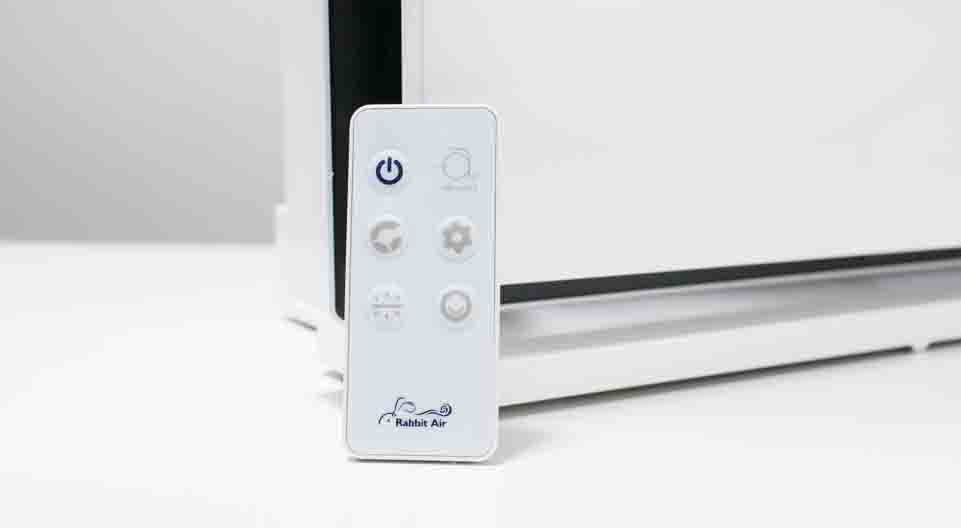
The SPA-780N version of MinusA2 is equipped with smart functionality. That is to say it can be controlled wirelessly via an app on your phone. Other versions of the air purifier (SPA-700A and SPA-780A) do not have this same functionality.
The app let’s you control everything you can control on the unit’s control panel and then some. One thing you can control on the app that you cannot control on the control panel is turning control panel LEDs on or off. There’s no way to do this on the physical control panel. Thus, all versions of the MinusA2 that are not the SPA-780N won’t let you turn control panel LEDs off. Only the SPA-780N allows you to turn them off via the app.
The ability to turn control panel LEDs on or off is much more of a unique feature than it should be. Many popular and well rated air purifiers do not have this functionality. For example, both the Winix 5500-2 and Coway Mighty have control panel LEDs that cannot be turned off.
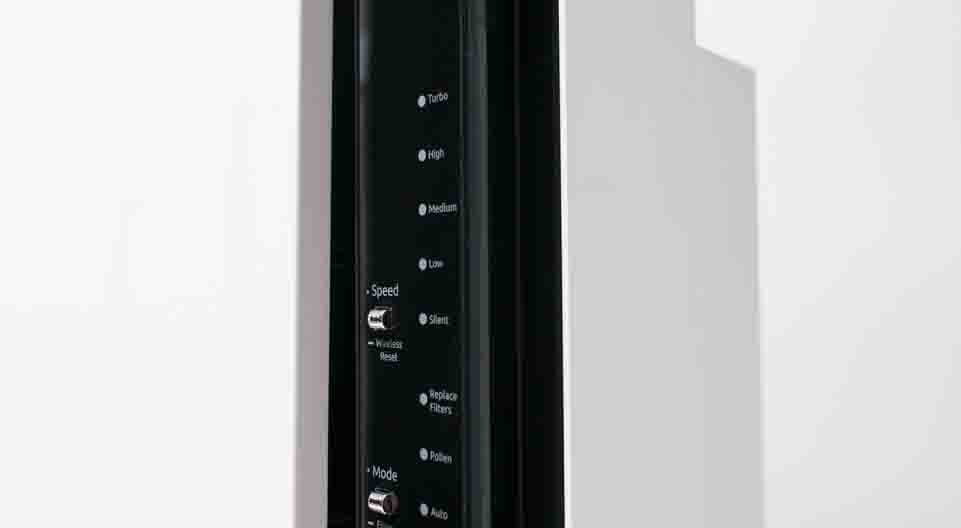
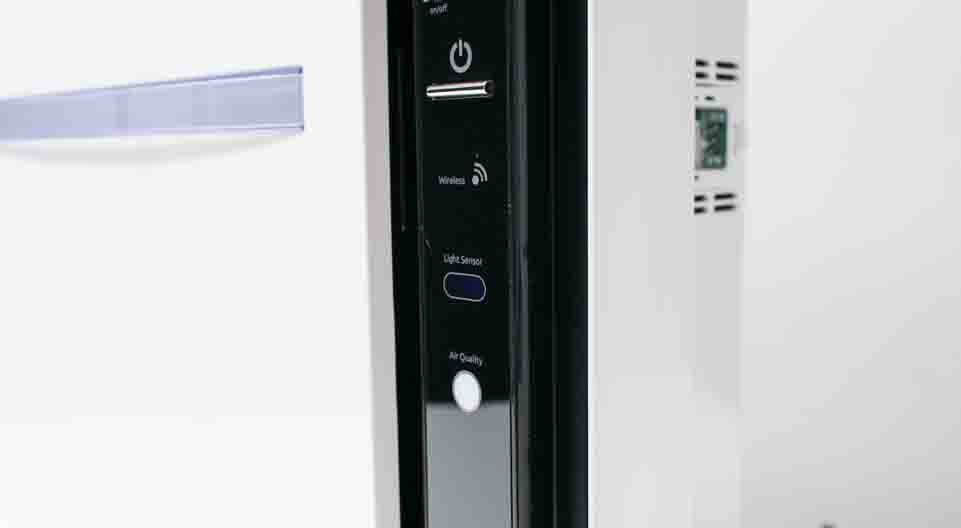
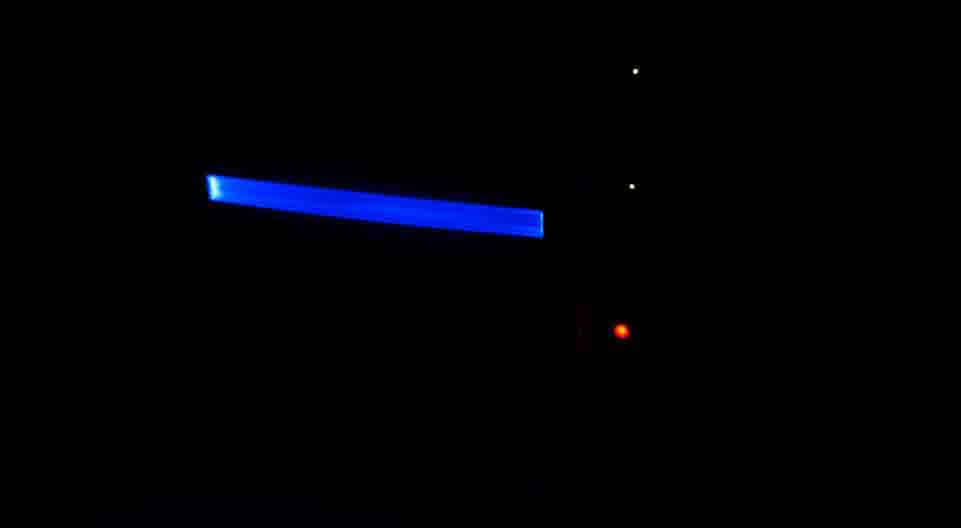
Moving on to portability, the MinusA2 doesn’t do too poorly but it also doesn’t do especially well. It’s definitely one of the heavier air purifiers we tested although it’s by no means a heavy appliance, overall. At 18 lb. 14 oz. it’s still relatively easy to pick up. For comparison, the Winix 5500-2 is 16 lb. 9 oz. and the Coway Mighty is 12 lb. 9 oz. The MinusA2 is picked up by a single handle on the top back of the air purifier.
In terms of overall size it’s definitely wider than most other air purifiers but it makes up for this by being slightly less tall – a more square design vs the rectangular design of comparable units.
Value
The MinusA2 is definitely one of the more expensive air purifiers we tested with a retail price of around $620. Throughout this review we’ve been comparing it to two top rated units – the Winix 5500-2 and Coway Mighty. Both the Winix and Coway usually retail for right around or under $200.
Not to mention the fact that the Rabbit Air’s filters are more expensive. A replacement filter set costs upwards of $90 to $100. For comparison, replacement filter sets for the Winix and Coway run somewhere in the $40 to $60 range.
Even at a much lower price, both the Winix and Coway offer very similar filtration quality and with even greater output.
Why then, would you ever consider the Rabbit Air a viable option for purchase?
We can think of a few reasons:
1. If you’re looking for a sleek and stylish air purifier there’s no doubt the MinusA2 has more pleasing aesthetics than most other air purifiers on the market.
2. If you’re looking to wall mount your air purifiers, the MinusA2 may be the only air purifier on the market for which a wall mount kit is available.
3. If you’re looking for a relatively high output (CFM) air purifier with smart functionality the MinusA2 is one of few options available at any price point.
4. If you’re looking for one of the most durable and reliable air purifiers on the market, the MinusA2 is certainly that and more with its excellent build quality and 5 year warranty.
5. If you value the theoretical improvement in filtration quality that comes from adding a medium filter and a customizable filter to the standard set of filters (pre-filter, HEPA filter, and carbon filter) that come with most other air purifiers. We didn’t notice a tangible improvement during testing but theoretically, more filters should result in better filtration quality.
Are any one or combination of these reasons enough reason for us to recommend the MinusA2 to most consumers? No. But should any of these reasons be a strong priority for you, it may very well be just the right air purifier for your particular application.
Add a Comment
Have a question or comment? Let us know below.

Comments